Employee Monitoring for Compliance and Risk Management

Employee monitoring has evolved far beyond productivity tracking. In today’s regulatory environment, it has become an essential component of compliance and risk management. Organizations across industries must ensure that their workforce operates within legal, ethical, and safety boundaries. Whether it involves healthcare providers who must maintain clean professional records, drivers who require valid licenses, or financial professionals subject to sanctions lists, monitoring helps protect companies, customers, and communities.
Here, we explore how employee monitoring supports compliance and risk management, the different types of monitoring available, best practices for implementation, and the role modern technology plays in making monitoring seamless.
Why Employee Monitoring Matters for Compliance
Compliance refers to following the laws, regulations, and industry standards that govern an organization. Risk management is the process of identifying, assessing, and reducing risks that could harm the organization. Employee monitoring sits at the intersection of these two areas.
Without ongoing monitoring, employers only have a snapshot of an individual at the time of hire. This creates blind spots that can expose organizations to risks such as:
- Employing individuals who lose professional licenses or credentials.
- Allowing drivers with newly suspended licenses to continue working.
- Failing to recognize employees who face recent criminal charges.
- Overlooking staff who are added to healthcare or government sanctions lists.
These risks carry significant consequences. Financial penalties, lawsuits, reputational damage, and regulatory violations can all result from failing to monitor employees effectively. In sectors such as healthcare, transportation, and finance, regulators often expect employers to have systems in place to identify these risks proactively.
Regulatory Drivers Behind Monitoring
Monitoring practices are influenced by a growing number of regulations. Some examples include:
- Healthcare organizations must comply with the Office of Inspector General (OIG) and the System for Award Management (SAM) lists, which track sanctioned providers.
- Transportation employers regulated by the Department of Transportation (DOT) are required to ensure drivers maintain safe motor vehicle records.
- Financial institutions must ensure employees are not flagged on anti-money laundering or terrorism financing watchlists.
- State-level Fair Chance and Ban the Box laws affect how and when criminal history can be used in hiring decisions, increasing the need for fair, ongoing monitoring rather than one-time exclusions.
Regulatory environments continue to shift. With new laws around cannabis use, privacy, and workplace safety, organizations are expected to balance employee rights with compliance obligations. Monitoring helps strike that balance by offering ongoing, individualized insights.
Types of Employee Monitoring for Compliance and Risk
Criminal Record Monitoring
Criminal monitoring alerts employers if an employee is arrested, charged, or convicted after hire. This is critical for roles involving vulnerable populations, financial responsibility, or safety-sensitive tasks.
Motor Vehicle Records Monitoring
For transportation, logistics, or delivery roles, monitoring driver records ensures employees maintain valid licenses and safe driving histories. Employers receive alerts about suspensions, violations, or DUIs.
Healthcare Sanctions Monitoring
Healthcare employers must verify that providers, nurses, and staff are not on exclusion lists. Sanctions monitoring protects patients and ensures compliance with OIG and state requirements.
Professional License and Credential Monitoring
In industries that require ongoing certification, monitoring helps track license renewals and ensures credentials remain valid.
Financial and Regulatory Watchlists
Financial services companies must screen employees against lists such as OFAC (Office of Foreign Assets Control) to prevent compliance breaches related to money laundering or terrorism financing.
Benefits of Continuous Monitoring
Early Detection of Risks
Real-time alerts mean issues are identified as they arise, not months or years later during periodic rescreening.
Reduced Liability
By proactively monitoring, employers can demonstrate that they are taking reasonable steps to prevent harm. This reduces exposure to lawsuits and regulatory fines.
Improved Workplace Safety
Monitoring helps keep unsafe drivers, sanctioned healthcare providers, or individuals facing serious charges out of roles where they could pose risks.
Stronger Reputation
Organizations that take compliance seriously are more likely to earn trust from customers, regulators, and the public.
Cost Savings
Addressing problems early prevents expensive incidents and regulatory penalties.
Challenges in Implementing Employee Monitoring
Privacy Concerns
Employees may feel that monitoring is invasive. Clear communication about what is monitored and why is essential.
Legal and Ethical Boundaries
Monitoring must comply with laws such as the Fair Credit Reporting Act (FCRA) and Equal Employment Opportunity Commission (EEOC) guidance.
Data Management
Processing alerts, managing renewals, and tracking compliance manually can overwhelm HR teams.
Integration with HR Systems
Monitoring must connect with applicant tracking systems (ATS) and human capital management systems (HCM) to ensure seamless workflows.
Best Practices for Employee Monitoring Programs
- Define the scope of monitoring
Identify which roles require criminal, motor vehicle, sanctions, or license monitoring. Not every role has the same level of risk. - Create clear policies
Develop internal policies that explain how monitoring works, what actions are taken in response to alerts, and how decisions will be made. - Prioritize transparency
Employees should understand why monitoring is in place and how it benefits safety, compliance, and reputation. - Ensure legal compliance
Work with legal counsel to ensure monitoring aligns with federal and state laws. - Automate processes where possible
Automated alerts, workflows, and integrations reduce manual work and improve accuracy. - Review monitoring practices regularly
As laws change, monitoring programs should be updated to remain compliant.
The Role of Technology in Monitoring
Modern technology has transformed employee monitoring from a manual, reactive process to a proactive, automated system. Features such as real-time data feeds, automated license tracking, and mobile-first employee portals improve both compliance and the employee experience.
Integration with HR platforms allows monitoring data to flow seamlessly into existing systems. This creates a unified view of employee compliance and reduces the need for manual reporting.
Why Vetty is a Strong Solution
Vetty offers a comprehensive monitoring platform designed for compliance-sensitive industries. Unlike traditional providers that treat monitoring as an optional add-on, Vetty builds continuous monitoring directly into the hiring and workforce lifecycle.
With VettyComply™, employers can automate license renewals, receive real-time criminal alerts, and track credentials without manual intervention. The platform is mobile-first, which means candidates and employees remain engaged and informed throughout the process. Vetty also integrates with leading ATS and HR systems, making it easy for organizations to set up and scale monitoring.
For HR leaders seeking a solution that balances compliance with a positive employee experience, Vetty provides both.
Conclusion
Employee monitoring is no longer optional for compliance-driven industries. It is a proactive way to reduce risk, ensure regulatory adherence, and protect both employees and customers. By leveraging technology and adopting best practices, organizations can implement monitoring programs that are both effective and respectful of employee rights.
Vetty delivers a modern, integrated solution that makes monitoring seamless, automated, and candidate-friendly. For HR leaders looking to reduce compliance risk while maintaining a positive workforce experience, employee monitoring with Vetty offers a strategic advantage.
Frequently Asked Questions
What industries benefit most from employee monitoring?
Industries such as healthcare, transportation, financial services, retail, and education rely heavily on monitoring to reduce compliance risks and protect customers.
How often should employees be monitored?
Best practice is to use continuous monitoring rather than periodic rechecks. This ensures employers are alerted to risks as they arise.
Does monitoring violate employee privacy?
No, when done correctly. Monitoring must follow federal and state laws and should only cover information relevant to compliance and safety.
How can monitoring be implemented without overwhelming HR teams?
Automation is key. Platforms like Vetty streamline alerts, automate workflows, and integrate with existing HR systems to reduce manual workload.
What is the difference between pre-employment screening and monitoring?
Pre-employment screening happens before hire and provides a one-time snapshot. Monitoring continues after hire and provides ongoing alerts about changes in employee status.
Let’s Build Your Hiring Advantage
Want to screen faster, place sooner, and win more? Let’s talk.






